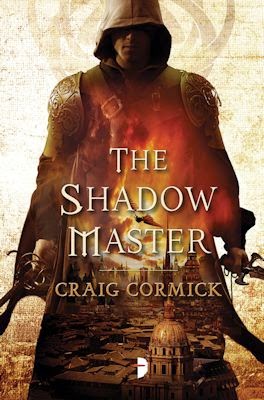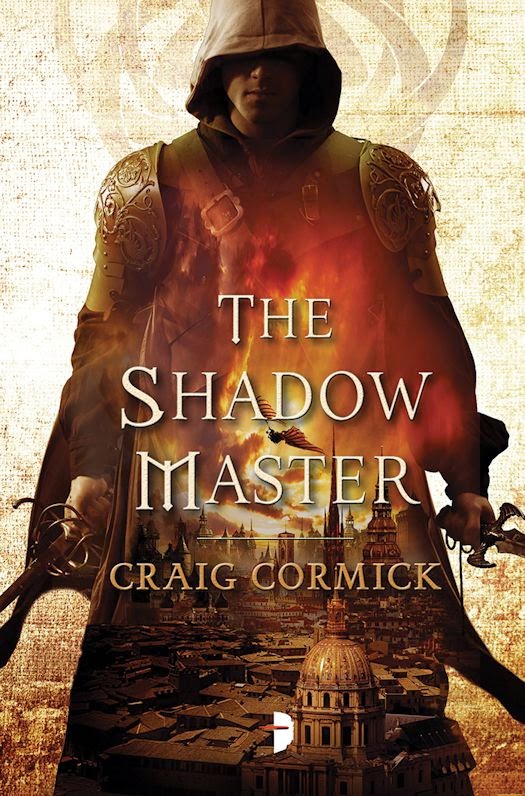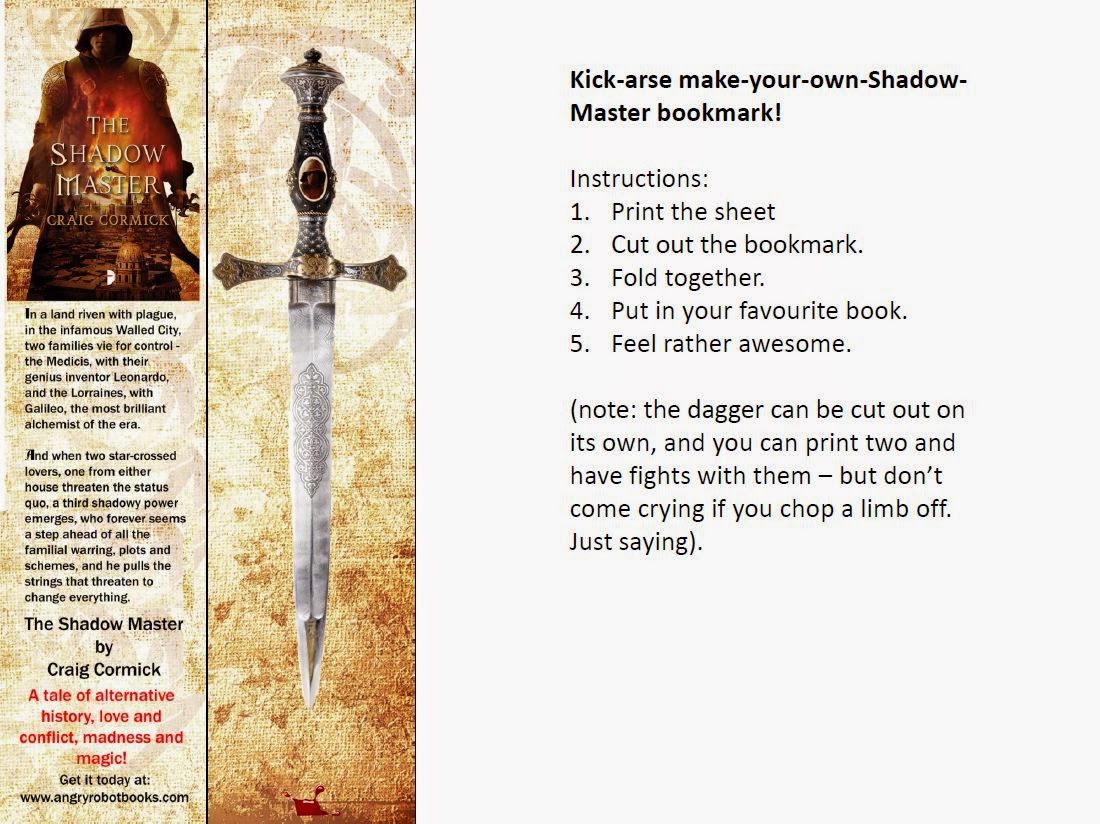The Qwillery asked Craig to answer the following questions about his latest novel,
is set in a city much like an Italian Renaissance city and includes historical figures. Why did you use historical figures in your novel? Is
includes the theme of star-crossed lovers. What in your opinion is appealing about this theme that we see in so many stories in many different genres?
Okay, so first a quick description of my new book
The Shadow Master: It’s a kick-arse tale of alternative history, love and conflict, madness and magic, with sword fights and mad clerics and assassins and bombs and magical shape-changers and dark catacombs and tall towers and an army of plague people – with everything except a car chase. And through it all is this mysterious figure, the Shadow Master, who is manipulating everyone towards his own ends.
Sound interesting? I sure hope so. (my mum thinks it does!)
Anyway - it’s set in Renaissance Italy – well a sort of Renaissance Italy, because the premise to my book is that science works like magic.
The idea jumped into my head when I was walking around the Galileo Museum in Florence, Italy, where I lucky enough to be for a science communication conference (my day job) and looking at all the inventions there I got this sudden idea - what if science behaved like magic? I mean, what if, when Galileo invented the telescope, it actually transported you across to what you were looking at? And what if the early chronometers actually slowed down time? And what if when you strapped on Leonardo da Vinci’s flying harness you actually transformed into a giant bird?
So I turned Florence into the Walled City of my book, and I went and studied up a lot on the history of the city and found out more about the Medici family and so, yes, I’ve used a lot of historical figures in the book – but I think that adds to it. If everyone were fictitious it wouldn’t have that taste of reality that makes alternate history satisfying.
And that brings me to the second question – the star-crossed lovers.
I love using folk tale motifs and so on in my work and wanted to do something similar in the Shadow Master. In my research I’d come across an 18th Century Italian novel the
Betrothed, written by Alessandro Manzoni in 1827. It is set in 1628 and tells of the plague years and the politics and church of the time – and has two young lovers – Lorenzo and Lucia. And they are the characters in my story.
A few commentators have presumed they are based on Romeo and Juliet – but it just goes to show there are many strong traditions of star-crossed lovers and they keep emerging throughout literature. Though it says something of Shakespeare’s impact that his is the one that has become the touchstone for stories of young unrequited love.
Shakespeare in fact based almost all his plays on existing plots and stories, but he was able to bring them to life with more depth and character and stunning use of language that has made them seem like the original stories. Check out Luigi da Porto’s
Giulietta e Romeo for example. (
https://archive.org/details/giuliettaeromeo00clizgoog)
Shakespeare’s R+J is believed to have been based on the
Palace of Pleasure, which was a collection of Italian tales translated by the Englishman William Painter in 1567, about 20 years before R+J was written. In the collection is the tale:
’The goodly History of the true and constant love of Romeo and Juliett’.
And prior to that there was also an English translation of the early 16th Century Italian tale
Giulietta e Romeo, by Arthur Brook in 1562.
We can go back further still, to the 15th Century, when the story was ‘Mariotto and Gianozza’. And we can keep going back to the tale of ‘Pyramus and Thisbe’, from Ovid’s
Metamorphoses, written about the year 0.
So clearly there is something in the star-crossed lovers theme that appeals to us, as it keeps emerging over and over again (don’t forget
West Side Story,
Gnomeo and Juliet and the zombie romance
Warm Bodies etc.). Personally I think we are more interested in the chase or the journey than we are in the final destination. Think of the sexual tension in
Lois and Clark that just fizzled and disappeared as soon as he got the gal (or she got the superman).
And I think our own real life experiences show that the imagination for what might be – romantically and sensually – is much more powerful than reality often is. Yet, on the other hand, I’m sure we’ve all had experiences too, when a romantic occasion suddenly transformed into something quite magical.
And that’s my answer to those that ask me about the magic in the book – magic can exist if you are willing to see things as magical.













